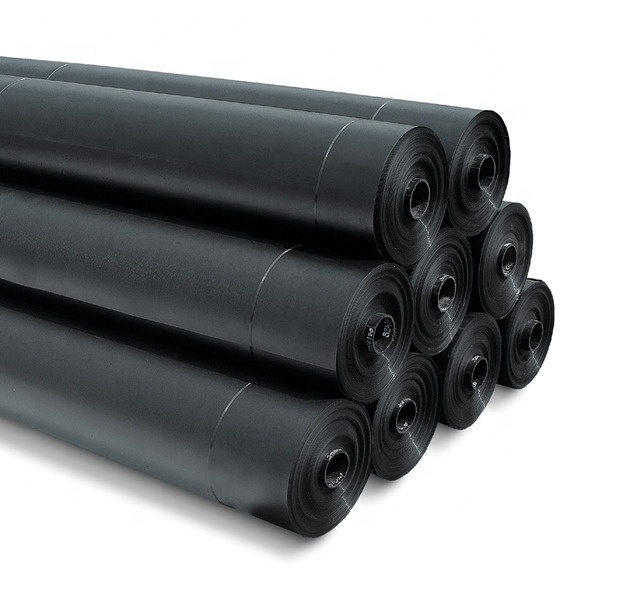Is pond liner waterproof?
Yes, pond liners are designed to be waterproof. They are used to create a barrier in ponds and water features to prevent water from seeping into the ground. Pond liners are typically made from materials such as PVC, EPDM rubber, or HDPE, which are all known for their water-resistant properties. These materials ensure that the pond holds water effectively and can maintain the desired water level.

Is a pond liner necessary?
A pond liner is not always necessary, but it often provides significant benefits depending on the type of pond and its location. Here are some considerations:
When a Pond Liner is Necessary:
Prevent Water Loss: In areas with porous or sandy soil, a pond liner prevents water from seeping away, ensuring the pond retains water.
Control Water Quality: Liners help control the interaction between pond water and surrounding soil, preventing contaminants from entering the pond and keeping the water clean.
Ease of Maintenance: Liners simplify maintenance by creating a consistent barrier, making it easier to clean and manage the pond.
Artificial Ponds: For decorative or garden ponds, liners are essential to create and maintain the desired shape and depth.
When a Pond Liner May Not Be Necessary:
Natural Ponds: In areas with naturally dense, clay-rich soil, a pond may hold water without a liner.
Large Natural Water Bodies: Larger ponds or lakes, especially those fed by natural springs or streams, may not require liners if they maintain water levels naturally.
Eco-Ponds: Some eco-friendly or wildlife ponds are designed to blend with the natural environment and may use natural materials instead of liners to create a more organic habitat.
Ultimately, the decision to use a pond liner depends on the specific conditions of the site, the type of pond you want to create, and the intended use of the pond.

What is the best pond liner?
The best pond liner depends on the specific requirements of your pond, including size, shape, and intended use. Here are some of the most common and highly recommended pond liner materials:
1. EPDM Rubber (Ethylene Propylene Diene Monomer)
- Durability: Extremely durable and flexible.
- Lifespan: Long lifespan, often over 20 years.
- Flexibility: Very flexible, making it suitable for irregularly shaped ponds.
- Installation: Easy to install.
- Environmental Safety: Safe for fish and plants.
2. PVC (Polyvinyl Chloride)
- Cost: Generally less expensive than EPDM.
- Flexibility: Flexible, but less so than EPDM.
- Durability: Good, but may become brittle over time, especially in cold weather.
- Lifespan: Shorter than EPDM, typically around 10-15 years.
- Environmental Safety: May contain chemicals harmful to fish and plants, so it’s important to choose a fish-safe variety.
3. HDPE (High-Density Polyethylene)
- Durability: Very durable and resistant to punctures.
- Lifespan: Long lifespan, similar to EPDM.
- Flexibility: Less flexible, making it more suitable for large, flat-bottomed ponds.
- Installation: Can be more challenging to install due to stiffness.
- Environmental Safety: Safe for fish and plants.
4. RPE (Reinforced Polyethylene)
- Strength: Extremely strong and puncture-resistant.
- Weight: Lightweight and easy to handle.
- Lifespan: Very long lifespan.
- Flexibility: Moderately flexible.
- Environmental Safety: Safe for fish and plants.
- Cost: More expensive, but offers excellent durability and longevity.
Choosing the Best Liner:
- For Small to Medium Ponds: EPDM is often the best choice due to its flexibility and ease of installation.
- For Large Ponds: HDPE or RPE may be more suitable due to their strength and puncture resistance.
- Budget Considerations: PVC liners can be a good choice for budget-conscious projects, but ensure it’s a fish-safe variety if you have aquatic life.
Additional Considerations:
- Thickness: Thicker liners (typically 45 mil or more) offer better durability and puncture resistance.
- Warranty: Look for liners with a good warranty, indicating the manufacturer’s confidence in the product’s longevity.
Ultimately, the best pond liner for your project will depend on balancing your budget, the specific needs of your pond, and the desired durability and ease of installation.

